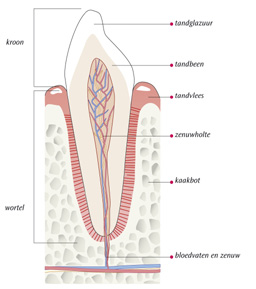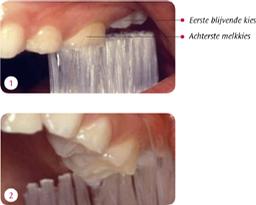Cheese selection
Cheese selection
Cheese selection
Does your son or daughter complain about sensitive teeth? Does your child eat poorly? Does Brushing Your Teeth Hurt? Perhaps there are cheese teeth involved. These are molars whose protective enamel layer is not or not well developed. They have a cheese color (white-cream to yellow-brown) in whole or in part and can also look a bit bumpy. They are more sensitive than other molars because the outer layer is weaker. Cheese teeth occur in both deciduous teeth and permanent teeth.
In the Netherlands, 5-9% of children have cheese teeth in their primary teeth. In the permanent teeth, 9-14% of the children has one or more cheese teeth. Children with cheese molars in the permanent teeth also have a greater chance of a white-yellow discoloration of the permanent front teeth.
Enamel Disorder
Sometimes something can go wrong with the formation of tooth enamel. Milk molars are already formed before the birth of the child. The development of the milk teeth begins when the child is still in the womb. When the child is about two years old, the molars are developed and erupt. The development of permanent molars and incisors begins shortly before birth and continues through the first 4 years of life. The cause of the disturbed enamel formation in the permanent molars and front teeth lies in that period.
If something goes wrong during development, deviations can occur. When a tooth has formed too little glaze or glaze of poor quality, we speak of a cheese tooth.
If there is a cheese tooth in the deciduous teeth, it is usually the back deciduous tooth. If there is a cheese tooth in the permanent teeth, it is usually the first large human tooth.

What causes cheese molars?
The cause of the cheese molars is still unknown. Mother's alcohol consumption during pregnancy, low birth weight and fever and illness of the child in the first year of life can influence cheese selection in the milk teeth cause. A hereditary factor can also play a role.
Was your child often ill in the first 4 years of life? Then that can be the cause of the disturbed enamel formation in the permanent choice. They break through when your child is between 5 and 6 years old. These first permanent molars break through behind the last milk molars, making it easy for them to go unnoticed. So be careful when (after) brushing.

If you brush the teeth lengthwise, you will skip the new permanent molar erupting (Photo 1). The new molars are especially vulnerable. Place the toothbrush there across the row of teeth (photo 2)
Do cheese teeth hurt?
Cheese teeth are sensitive and fragile. The glaze is of lower quality. As a result, the tooth wears out faster. This allows holes to form more quickly. Within a short time, large parts of a tooth can become affected or crumble. Cheese teeth can hurt. Many children avoid sensitive teeth while brushing their teeth. This results in even earlier cavities and even more sensitivity. Cheese teeth are not or poorly protected against external attacks. Eating or drinking hot, cold, sweet or sour products can be painful.
Can you protect cheese teeth?
You can protect cheese teeth with fluoride. Brushing your teeth properly is the best way to apply fluoride on a daily basis. It is very important to brush your teeth correctly twice a day. Also with sensitivity. The dentist or dental hygienist can advise your child to brush and/or rinse extra teeth with a fluoride mouthwash, provided that the child can spit out well. Be extra alert to breaking through the (permanent) molars. Make sure your child regularly visits the dentist and/or dental hygienist. Then he / she can check your child's teeth properly and give advice.

What does the dentist do about cheese teeth?
It is important that the dentist or dental hygienist can identify the enamel defect at an early stage. Therefore, take your child to the oral care practice when the first tooth breaks through. The dentist or dental hygienist can limit the consequences of the enamel defect and the formation of cavities as much as possible. Does your child have cheese teeth in his milk teeth and are the first permanent teeth coming through? Then the dental care provider will call you more often for a check-up. With cheese teeth that are caught early, you can limit the problems caused by cheese teeth with proper tooth brushing and proper fluoride use.
The dental care provider checks and cleans the teeth and can provide extra protection for vulnerable molars, for example with a fluoride varnish. In many cases, the practitioner will fill the cheese molars with a tooth-colored material. In more serious cases, he/she can, for example, fit a metal crown. In some cases, the dentist will have to pull cheese teeth.